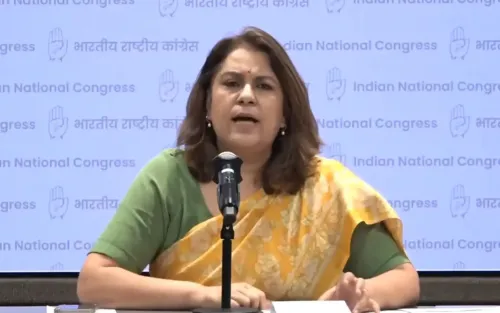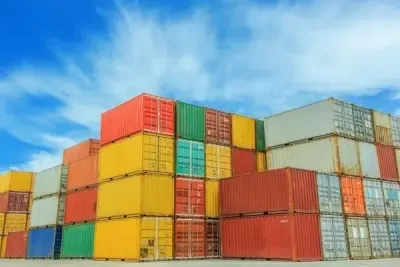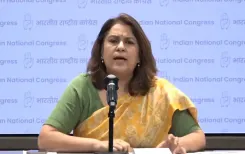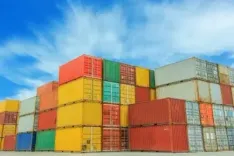How Can India Counteract US Tariffs to Boost Exports?

Synopsis
Key Takeaways
- India's MSMEs are crucial, representing 45% of total exports.
- New US tariffs could raise total tariffs to 50% on Indian goods.
- Leveraging the UK trade deal can enhance MSME competitiveness.
- Textiles, gems, and seafood sectors will feel the most impact.
- Pharmaceuticals remain unaffected by current tariffs.
New Delhi, Aug 20 (NationPress) In response to the US tariffs that impact Micro, Small and Medium Enterprises (MSMEs), India has the opportunity to boost exports to other nations while also capitalizing on the advantages of the recently finalized trade agreement with the UK and a prospective accord with the European Union (EU), as highlighted in a report released on Wednesday.
The higher tariffs imposed by the US will significantly affect MSMEs, which represent nearly 45 percent of India's overall exports, according to findings from Crisil Intelligence.
Currently, the US enforces a 25 percent tariff on Indian goods, and an additional 25 percent tariff is set to take effect from August 27, bringing the total tariff on Indian products to a staggering 50 percent.
The likely implementation of this additional ad valorem tariff will considerably impact specific sectors, warranting close observation, noted the report.
According to Elizabeth Master, Associate Director at Crisil Intelligence, "The India-UK free trade agreement is beneficial for MSMEs in export-driven sectors such as textiles, gems and jewellery, seafood, leather, and pharmaceuticals."
While these sectors make up less than 3 percent of imports to the UK, excluding ready-made garments (RMG) at 6 percent, the trade deal is poised to enhance the competitiveness of MSMEs against countries like Bangladesh, Cambodia, and Turkey, while also providing an advantage over China and Vietnam in RMG, Master added.
The textiles, gems and jewellery, and seafood industries, which comprise 25 percent of India's exports to the US, are expected to bear the brunt of these tariffs. MSMEs hold over 70 percent of market share in these areas, with chemicals being another sector likely to face challenges, where MSMEs account for 40 percent of the market.
As per Pushan Sharma, Director at Crisil Intelligence, the partial absorption of increased product prices due to the elevated tariffs will add pressure on MSMEs, further tightening their already narrow profit margins, presenting a substantial challenge to their competitive position.
In the gems and jewellery sector, MSMEs in Surat, which control more than 80 percent of diamond exports, will experience significant tariff impacts.
The auto components sector is predicted to face a relatively minor adverse effect since the US constitutes only 3.5 percent of India's total production.
Conversely, certain sectors are currently unaffected. For instance, pharmaceutical products, which represent 12 percent of exports to the US, are presently exempt from tariffs.
In the steel industry, the impact of US tariffs is anticipated to be minimal for MSMEs, as they primarily engage in re-rolling and producing long products, while the US mainly imports flat products from India. Additionally, the US contributes to only 1 percent of India's steel exports, as noted in the report.









